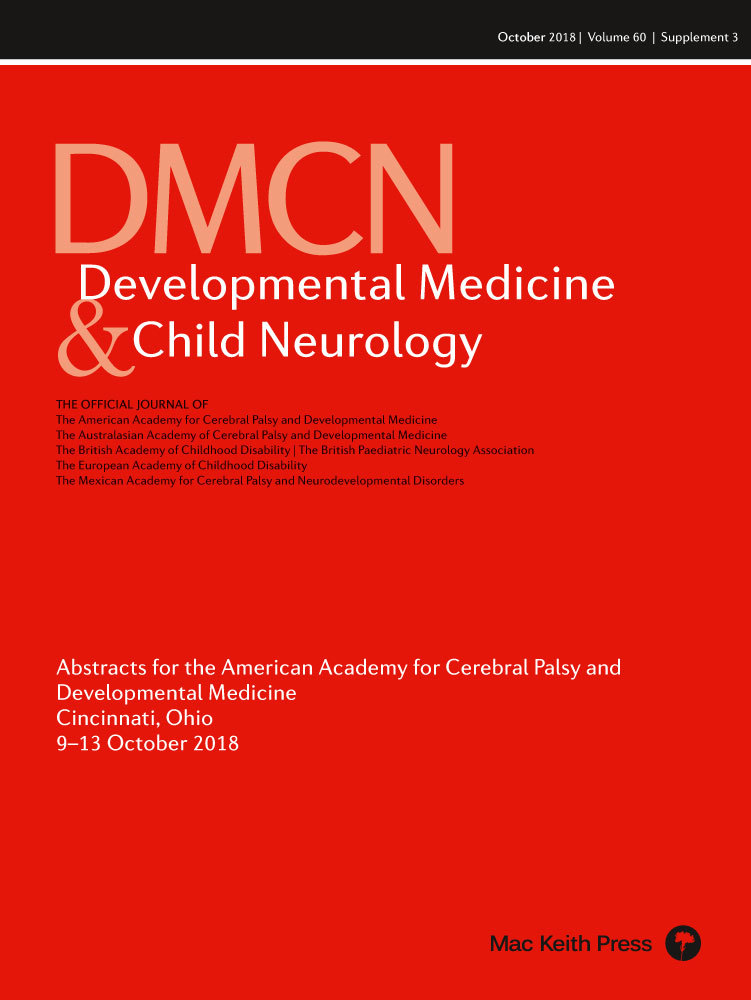Predictive value of the hand assessment for infants (HAI) for unilateral cerebral palsy in infants with early upper limb asymmetry following a unilateral brain injury
K3
U Ryll1, L Krumlinde-Sundholm2, N Wagenaar3, C Verhage3, L de Vries3, C Bastiaenen4, A-C Eliasson1
1Department of Women's and Children's Health, Solna, Sweden; 2Karolinska Institutet, Solna, Sweden; 3Universitair Medisch Centrum, Utrecht, Netherlands; 4Caphri Research Institute, Department of Epidemiology, Maastricht University, Maastricht, Netherlands
Background and Objective(s): Infants with early brain lesion are at risk of developing unilateral cerebral palsy (UCP). Accurate assessments are required for early detection and prognostic purposes of infants at high risk to develop UCP, also in order to benefit from early intervention when plasticity of the nervous system is high. The newly developed Rasch-based Hand Assessment for Infants (HAI) is the first standardized test to quantify the asymmetry between upper limbs and both hands use in infants (3–12 months) with high risk of UCP and to follow their development over time. Consequently, the question arises how accurate HAI, early in life, can predict UCP as confirmed at 12–18 months. Thus, the aim is to investigate the predictive validity of the HAI for UCP at 12–18 months in infants with early hand asymmetry.
Study Design: Cohort study.
Study Participants & Setting: A preliminary sample of infants with signs of hand asymmetry between 3–8 months of (corrected) age due to unilateral brain injury at risk of developing UCP was recruited from Karolinska University Hospital Stockholm, Sweden and the Wilhelmina Children's Hospital of the University Medical Center in Utrecht. Inclusion criteria were (1) three raw points difference between both hands on the HAI Each hand sum score between 3–8 months of (corrected) age, (2) confirmed unilateral brain injury, and (3) confirmed outcome (UCP yes/no) at 12–18 months.
Materials/Methods: ROC curve analysis and diagnostic accuracy estimates were used to investigate the different HAI scales (Each hand sum score, Asymmetry index, Both hands measure) at various ages to the clinical outcome (UCP yes/no) at 12–18 months.
Results: Preliminary results of 52 infants indicated excellent values for the accuracy, sensitivity and specificity, and likewise predictive values across all HAI scales at earliest between 3.5–4.5 months (week 15–20) of (corrected) age. At age 3 months no HAI scale was sensitive (72 %) or specific (91 %) enough yielding limited positive (PPV 69 %) and negative predictive (NPV 83 %) values and accuracy of 71 %. The contralesional HAI Each hand sum score indicated the best prediction with excellent sensitivity (94 %) and specificity (91 %), very good to excellent predictive values (PPV 85 %, NPV 97 %), with an accuracy of 92 % between 3.5–4.5 months in a cohort with 35 % CP prevalence. These findings will be further analysed in a larger cohort.
Conclusions/Significance: Preliminary results showed excellent sensitivity and specificity with very good to excellent predictive values for HAI to predict UCP from 3.5–4.5 months of (corrected) age.




